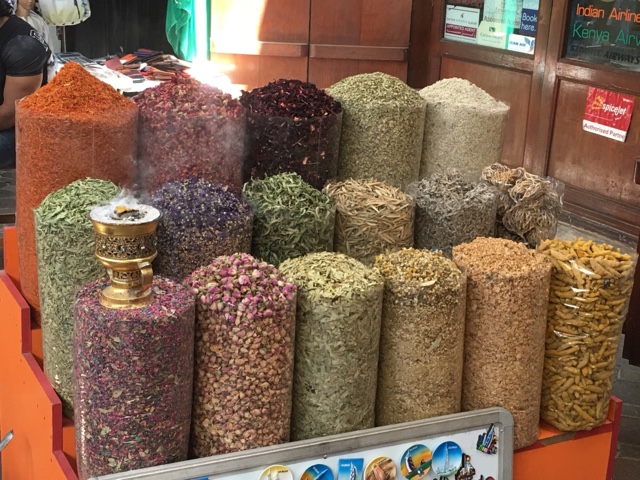It's a pleasant 29C today so I used the Big Bus Dubai to get around.
Because modern Dubai is really only recent, it's buildings are more interesting than other buildings in Europe, from an architectural design sense, not an historic sense.
The race is well and truly on to design the next outrageously high tower in Dubai. The growth here is mind-blowing both in terms of the speed and the quantity of buildings. In fact in just a 20 year period, there were over 300 skyscrapers built, averaging 2 per week.
Now everybody likes to live by the water, and the Dubai Creek attracts many people and businesses along its banks. However, annoyingly it finishes somewhere inland so what's next for a city that's already created a few hundred islands and built hotels and apartment blocks on them? It extends the creek of course so more people can have a water view! As you can imagine this is a massive task, but it's amazing what throwing a few billion $ at a problem can do. I have no doubt it will be finished within a couple of years.
Apart from a credit crisis between 2007 and 2010, Dubai's economy was 4.6% last year which is better than most of the world although it's still in extreme debt. It has a population of 2.6 million and unemployment of only 4.6% and interestingly nobody is below the poverty line.
There's about 1500 mosques in Dubai as the religious leader doesn't want anyone to walk more than 500m to one.
He must have the same approach to shopping malls as there are over 70 completed malls and 8 still under construction. And when I say malls I mean MALLS!
Burj Khalifa - this is currently the tallest building in the world. 160 storeys, 828 metres, 330,000 cubic metres of concrete, 39,000 tons of steel (equivalent to 5x Airbus A380s), 103,000 metres of glass, 22 million man hours (12,000 workers at any one time), 2909 steps from the ground to the 160th floor.
Although Dubai's main income is still oil and natural gas, (40% of the economy), tourism, manufacturing, and services now make up the rest as the UAE knew it had to diversify its economy. It appears that it might be stealing the cosmetic surgery holiday traffic from Asia if the number of clinics along the beach road are anything to go by.
Buru Al Arab and Jumeira Beach
Palm Jumeirah - this is an artificial archipelago built off the coast of Dubai near the Burj Al Arab. This is the first of three such islands planned. Construction began in 2001 and the first residents moved in during 2006. By 2009 there were 28 hotels.
Souks - these are markets which sell mostly fabrics, clothing such as pashminas and scarves, spices, and if course fake watches and other nicknacks.



















































